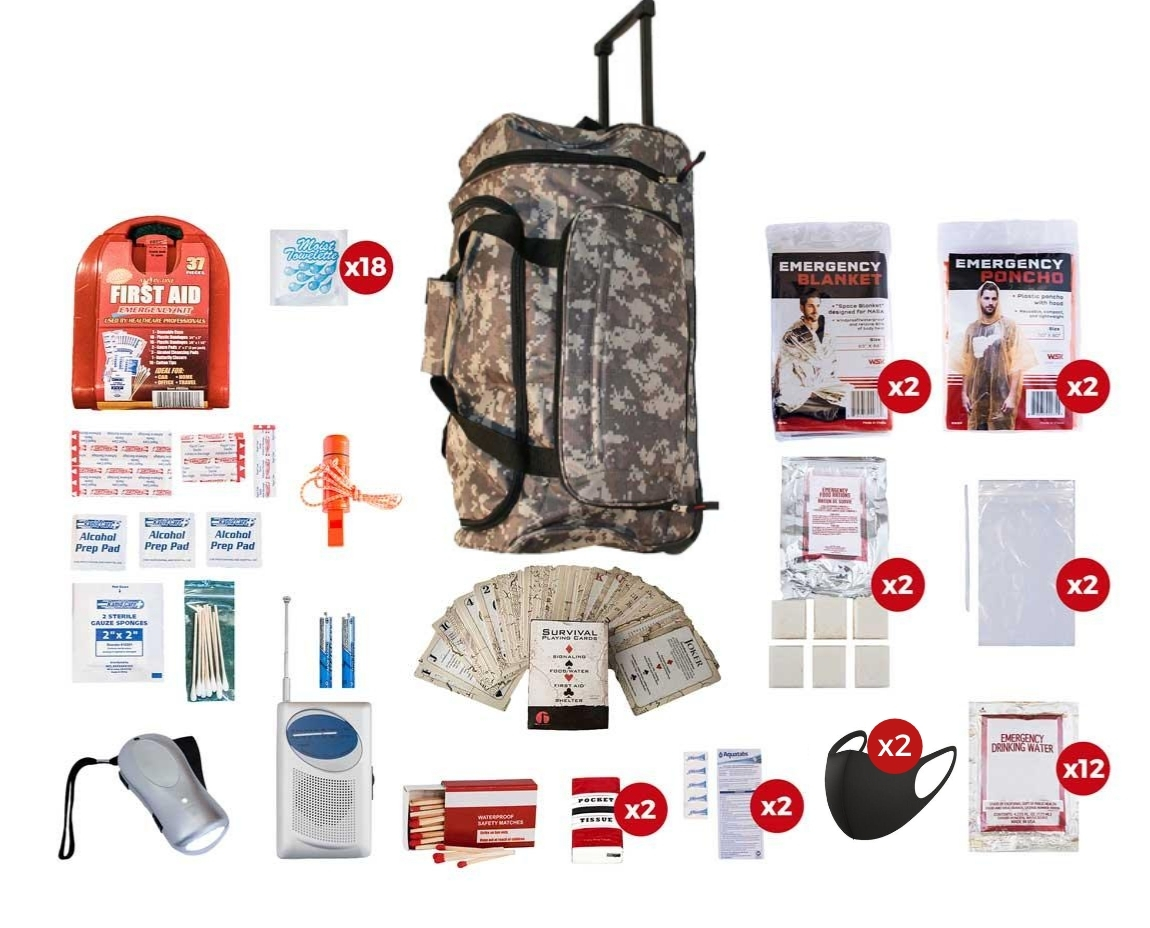2 Person Survival Kit (72+ Hours)
All items are packed securely in our Large Camo Wheel Bag. Individual components are placed in waterproof bags and neatly organized in the backpack for easy access. Hand-assembled in the USA.
The kit includes the following:
Food and Water: The food and water in this kit have a 5-year shelf life, and are meant to provide nutrition for 2 people for 72 hours.
- (12) 4 oz. Water Pouches
- (12) 400-Calorie Food Bars (4800 Calories)
- (20) Water Purification Tablets – each tablet purifies 1 liter of water
- (2) 1-Liter Hydration Bags with Straw
Light and Communication: These items can come in handy if you experience a home power outage, car trouble, or other emergency.
- (1) AM/FM Radio (batteries included)
- (1) Hand Rechargeable Flashlight (never needs batteries)
- (1) 5-in-1 Survival Whistle
- (1) Box of Waterproof Matches
Shelter and Warmth: These supplies will protect you from wind, sun, rain, and other harsh conditions.
- (2) Emergency Survival Blankets
- (2) Emergency Ponchos with Hood
Tools: These items can be useful when you need help with navigation, transport, personal protection, or shelter.
- (2) Reusable Face Masks
Hygiene and Sanitation: Hygiene is important in a disaster; staying clean can protect against infection, disease, and depression.
- (2) Pocket Tissues
- (18) Wet wipes
First Aid: A first aid kit can be used to treat minor injuries and protect against more serious health threats in a disaster.
- (1) 37 Piece Bandage First Aid Kit – handy for minor cuts
- (3) Alcohol cleansing pads
- (1) Butterfly closure
- (10) Cotton tip applicators
- (2) Gauze pads
- (10) Plastic bandages (3/4” x 3”)
- (10) Plastic bandages (3/8” x 1 1/2”)
- (1) Reusable case
Other: These items are useful for relieving stress and supporting activity under challenging conditions.
- (1) Survival Playing Cards – 52 cards illustrating valuable survival skills that will educate and entertain you in an emergency
Emergency Survival Kit Information:
This kit was designed using advice from experts in the field of emergency preparedness. It follows guidelines offered by government agencies and nonprofit preparedness organizations.

